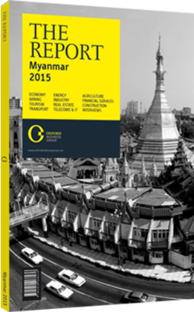U Win Myint, Minister of Commerce: Interview

Interview: U Win Myint
Which sectors hold the most potential for developing Myanmar’s trade relations?
U WIN MYINT: Myanmar still possesses many untapped resources due to its long experience of isolation from international markets, as well as economic sanctions. The resumption of the Generalised System of Preferences (GSP) from the EU and Japan, as well as the ASEAN-plus-five free trade agreement, have increased trade volumes from $15bn to nearly $25bn within the three-year tenure of the new government. Recent inflows of foreign direct investment (FDI) to export-oriented manufacturing sectors will strengthen future trade volumes. Initiatives for trade diversification comprise another element of sustainable economic growth, while the shift to more modern farming techniques will also be vital in job creation and poverty reduction.
Which industry segments in Myanmar’s special economic zones (SEZs) will present the sector with the greatest opportunities for growth going forward?
WIN MYINT: In terms of SEZs, processing and manufacturing – including agro-based industries and export-oriented labour-intensive production – will present the greatest opportunities for growth going forward. Myanmar is currently establishing three SEZs: Thilawa, Dawei and Kyauk Phyu. If we take a closer look at Thilawa SEZ, the most developed of the three, it is clear that labour-intensive industries such as garments are leading the demand for factory space. The establishment of these SEZs will assist the regions’ drive to develop stronger economic and trade links between ASEAN members. Regional connectivity infrastructure projects are also being constructed at the same time.
How would you assess bilateral trade and economic cooperation between Myanmar and China?
WIN MYINT: China has long been Myanmar’s largest trading partner and its greatest source of FDI. For example, China has made major investments in the energy, mining and manufacturing sectors, among others. Cross-border trade has grown substantially due primarily to good connectivity, open border trading zones and a continuous trade fair, which alternates between Myanmar and Yunnan, China.
More recently, however, FDI inflows from China have declined due to opposition to some projects. Although Chinese involvement has declined of late, the opening of Myanmar’s borders to the outside world, coupled with the alleviation of sanctions, has seen investment rise dramatically across a variety of sectors.
What role do you believe manufacturing can play in boosting trade over the next few years?
WIN MYINT: The labour-intensive manufacturing of garments and textiles, as well as export-oriented agro-based processing, will strongly promote international trade in the next few years. In particular, abundant cheap labour and the resumption of the GSP from the EU since June 2013 are contributing to Myanmar’s attractiveness as a major focus for export-oriented labour-intensive producers in Asia. Inflows of FDI to the manufacturing sector have increased considerably in recent years. Moreover, political conflict in Thailand and the rising wages of Chinese workers have led companies to transfer their factories to a variety of lower-wage countries, including Myanmar.
What are the greatest obstacles to FDI in Myanmar, and how can these challenges best be addressed?
WIN MYINT: The shortage in the regular power supply; the rising cost of land and building materials; ongoing instability and violence in some areas; inadequate infrastructure; as well as an underdeveloped banking sector should be regarded as among the greatest obstacles for those investors who are looking to tap into the economy. Despite these factors, however, Myanmar still holds many opportunities for investors, both in the region and globally. Risks to new investors can be reduced if they do their research and can understand Myanmar’s unique business environment and culture.
You have reached the limit of premium articles you can view for free.
Choose from the options below to purchase print or digital editions of our Reports. You can also purchase a website subscription giving you unlimited access to all of our Reports online for 12 months.
If you have already purchased this Report or have a website subscription, please login to continue.

